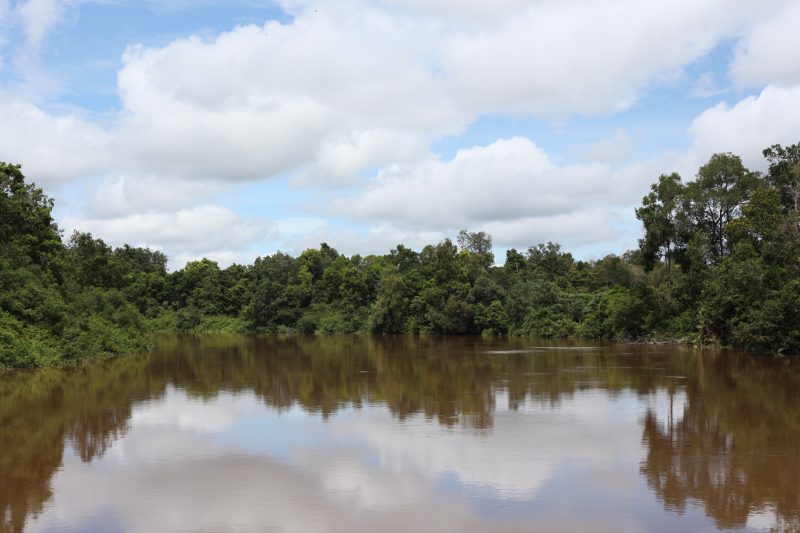This year’s forest fires sky-rocketed Indonesia’s carbon emissions tenfold. The government has announced a plan to revamp the nation’s land and forest management.
At the end of November, 195 countries and 150 world leaders, including Barack Obama, Xi Jinping, and Joko Widodo, gathered in Paris for the UN Climate Conference. The event served as a forum for leaders to share knowledge about climate change, a problem dubbed by many scientists and advocates as the most pressing issue of the century.
The aim of the talk was for participating countries to agree on a legally-binding and universal agreement that would, in effect, curb rising global temperatures to no more than two degrees above pre-industrial levels this century.
Since the 1990s, the idea of limiting the average global surface temperature to this level has been regarded as an adequate way to avoid a dangerous climate shift. The theory has been accepted by scientists and policy makers around the globe. However, recent studies show that the environmental and social impacts of such an average temperature could actually be much more profound than previously thought.
The pledges on behalf of participating countries so far would still result in global warming of at least 2.7 degrees, even if they’re all met. This is better than the five-degree rise we might expect without action, but it’s still short of the two-degree goal.
If emissions continue unabated, the world would be on track to exceed this otherwise safe current temperature in about 30 years. This would expose communities to increasingly dangerous forest fires, extreme weather conditions, droughts, and other adverse climate effects.
Right at the heart of the climate change debate are the issues of fossil fuels and deforestation, both major contributors to our global carbon emissions.
While big countries are currently focusing on renewable energy, a recent study shows that halving deforestation across the tropics would keep more than one billion tonnes of carbon out of the atmosphere. This would contribute significantly to the world’s efforts of limiting a global temperature rise.
A recent study appeared in the December edition of the scientific journal Global Change Biology titled ‘Can carbon emissions from tropical deforestation drop by 50% in 5 years?’ The study comes up with the numbers in its title after generating a world map of carbon in tropical forests. It also establishes benchmarks for average annual carbon emissions caused by deforestation in the tropics.
The study highlights the important role the tropics play in climate change. With this in mind, many countries close to the Equator have already committed to a goal of halving their carbon emissions from deforestation by 2020. Leaders solidified their commitments in 2014 by signing a pledge document called the New York Declaration on Forests (NYDF).
Indonesia, which has the second highest greenhouse gas emissions from deforestation only after Brazil, was one of the 15 tropical countries that signed the NYDF. However, the archipelago’s commitment is now being called into question, after the ecological catastrophe it caused this year from raging forest fires on Sumatra and Kalimantan.
Carbon emissions from gross deforestation declined in Indonesia from a 2012 high of 0.362 to 0.205 billion tonnes in 2013. However, if the nation really wants to halve its carbon emissions from deforestation relative to the benchmark, it will have to reduce its average rate of emissions over the next five years to 0.099 billion tonnes of carbon.
The significant downturn in emissions from deforestation in 2013 is likely due to a combination of price and policy signals. This was particularly true in the palm oil, pulp, and paper sectors. However, their relative importance and the sustainability of that downturn remain uncertain. The recent fires ate up more than 2 million hectares of land across Indonesia in 2015. The country’s haze crisis contributed nearly 1.4 billion tonnes to the country’s total annual emissions, making it the world’s third-largest air polluter this year, after China and the US.
According to the report, emissions from the fires may amount to more than ten times the acceptable benchmark. Faced with such a grim outlook, the government acted quickly by announcing several policies aiming to revamp the forestry sector, especially on peatland management.
“Earlier this year, Indonesia’s President […] called for all new peatland development to immediately cease while all existing licenses on peatland are reviewed,” says study co-author Belinda A. Margono, a remote sensing specialist and deforestation analyst. “The government plans to implement a major peatland restoration effort in an attempt to ensure that the conditions that allowed for this year’s catastrophic fires do not arise in the future.”
During his speech at the UN Climate Conference, President Jokowi reiterated his commitment to tackle rampant deforestation in the country, explaining that Indonesia would implement a “one map” policy, a moratorium on peatland permits, forest restoration, and conservation efforts.
Karliansyah, Director of Pollution and Damage at Indonesia’s Environment and Forestry Ministry, says that the government is currently drafting a regulation that would serve as a legal basis for peatland protection in the country. According to him, the ministers met on December 8 to discuss revamping rules of peatland permits and more.
However, the one map policy has been in development for several years. The country is suffering from conflicts related to overlapping forestry and land zoning issues, making it difficult for the government to properly manage the sector, including peatlands.
Apart from the planned one map policy, the government also introduced a monitoring system called the Indonesian National Accounting Carbon System (INCAS) in a bid to reduce national carbon emissions. Officials presented the INCAS recently during the Global Landscape Forum on the sidelines of the UN Climate Conference.
“This will help Indonesia to monitor our emissions reductions and reach our target,” says Presidential Special Envoy for Climate Change, Rachmat Witoelar. The system will use spatial data from the National Institute of Aeronautics and Space to calculate carbon stocks.
INCAS head researcher Haruni Krisnawati says the carbon monitoring system has been in development since 2011 and meets UN standards. The system can be used to measure carbon stocks in forest and peatland areas alike, both underground and aboveground.
Both the one map policy and the INCAS are in line with the report’s argument that the country must have reliable data if it really wants to halve its deforestation rate.
“Halving emissions from deforestation is achievable,” says Nancy Harris, a co-author of the report and Research Manager for Global Forest Watch at the World Resources Institute. “But first you need robust, transparent, and evidence-based benchmarks against which to measure progress.”
While Nancy believes the goal is achievable, the report acknowledges that halving gross tropical deforestation emissions in five years is an immense challenge. “Market failures and governance failures are the problem,” says Daniel Zarin, lead author of the study. “Forests are cut down because someone profits from selling the wood, or the cattle or crops that are grown on the deforested land, or from speculating in poorly regulated land markets. But the very real losses that deforestation incurs aren’t counted against those profits, and it’s not only carbon emissions.”
Zarin points out the role that regular people play in contributing to deforestation and climate change.
“Agricultural regions and urban centres lose the benefits forests provide to the hydrological cycle. The biodiversity losses alone are incalculable. We casually consume products with ingredients grown in faraway lands from which indigenous peoples and other local communities were only recently evicted – or worse – to make way for the chainsaws and the bulldozers that turn forests into vast monocultural fields for commodity manufacture. These are crimes in which we are all complicit,” says Zarin.
He adds that reducing gross deforestation would provide public benefits on a local, national, and global level. “It makes sense for the international community to support forest countries that show real leadership. Many countries and corporations have already agreed to halve deforestation by 2020, and to eliminate deforestation from commodity production. Now we have robust benchmarks against which progress can be measured. There are always excuses for inaction, but the time for excuses has run out.”




